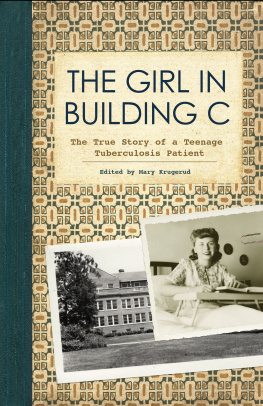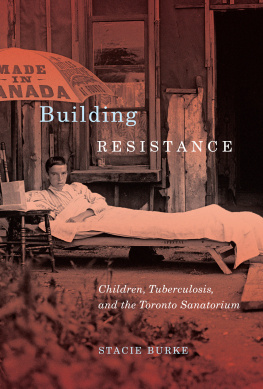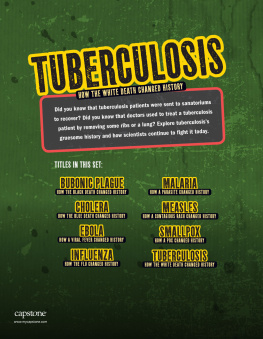
THE GIRL IN BUILDING C

THE GIRL IN BUILDING C
The True Story of a Teenage Tuberculosis Patient
EDITED BY
Mary Krugerud


Text copyright 2018 by Mary Krugerud. Other materials copyright 2018 by the Minnesota Historical Society. All rights reserved. No part of this book may be used or reproduced in any manner whatsoever without written permission except in the case of brief quotations embodied in critical articles and reviews. For information, write to the Minnesota Historical Society Press, 345 Kellogg Blvd. W., St. Paul, MN 55102-1906.
www.mnhspress.org
The Minnesota Historical Society Press is a member of the Association of University Presses.
Manufactured in the United States of America
10 9 8 7 6 5 4 3 2 1
 The paper used in this publication meets the minimum requirements of the American National Standard for Information SciencesPermanence for Printed Library Materials, ANSI Z39.48-1984.
The paper used in this publication meets the minimum requirements of the American National Standard for Information SciencesPermanence for Printed Library Materials, ANSI Z39.48-1984.
International Standard Book Number
ISBN: 978-1-68134-095-1 (paper)
ISBN: 978-1-68134-096-8 (e-book)
Library of Congress Cataloging-in-Publication Data
Names: Barnes, Marilyn J., 1927 author. | Krugerud, Mary, editor. | Minnesota Historical Society Press, publisher.
Title: The girl in building C : the true story of a teenage tuberculosis patient / edited by Mary Krugerud.
Other titles: True story of a teenage tuberculosis patient
Description: St. Paul, MN : The Minnesota Historical Society Press, [2018] | Includes bibliographical references and index.
Identifiers: LCCN 2018022614 | ISBN 9781681340951 (pbk. : alk. paper) | ISBN 9781681340968 (ebook)
Subjects: | MESH: Barnes, Marilyn J., 1927 | Minnesota Sanatorium for Consumptives. | Tuberculosis, Pulmonaryrehabilitation | Hospitalization | Adolescent | Inpatients | Minnesota | Collected Correspondence
Classification: LCC RC310 | NLM WF 330 | DDC 616.99/500835dc23
LC record available at https://lccn.loc.gov/2018022614
This and other Minnesota Historical Society Press books are available from popular e-book vendors.
This book is dedicated to Marilyn Barnes Robertz and the more than fifty thousand people who sought to be healed at one of Minnesotas state, county, or private tuberculosis sanatoriums
THE GIRL IN BUILDING C
THE GIRL IN BUILDING C
INTRODUCTION
SOMETIMES, WHEN ALL YOU ARE DOING IS LOOKING FOR INFORMAtion, a gift appears. In 2015, I received a Legacy Research Fellowship award from the Minnesota Historical Society to study the history of tuberculosis treatment at Minnesotas sanatoriums. One of the subjects, Ah-gwah-ching State Sanatorium at Walker, is well documented in the societys government collection, but I was hoping to find something more personala diary, perhaps. Instead, I found the Marilyn J. Barnes papers. Not just a haphazard collection of papers, but more than three hundred articulate letters written from a young Ah-gwah-ching patient to her parents during World War II. I hoped to connect with someone who remembered this delightful person and could tell me more about her. Instead, I found Marilyn, very alive and alert at age eighty-eight. We talked on the telephone, and then we met. I knew her experience deserved to be more than a footnote to Ah-gwah-chings history, and so began a series of interviews that grew into a book and produced a friendship. The Girl in Building C is her story.
* * *
Marilyn Barnes, age sixteen, lived in St. Peter, Minnesota, with her parents, Virginia and Wayland, known locally as Bill. A high school student with good grades, she was active in band and chorus at school and church. While attending an event in Minneapolis, she shared a hotel room with a girl from another town. The girl coughed a lot, and Marilyn later developed a cold with a cough that did not go away but became progressively worse. Marilyn had a fever and lost weight. She coughed up blood, alarming her parents, who brought her to the doctor. He admitted her to the hospital in St. Peter, where a skin test and an x-ray confirmed that she had tuberculosis.
Between 1912 and 1918, thirty-five of Minnesotas eighty-seven counties responded to legislation authorizing the construction and maintenance of tuberculosis sanatoriums within a district system. Because Nicollet County did not belong to one of the fourteen existing districts, Marilyn was transported to Ah-gwah-ching State Sanatorium near Walker. Ah-gwah-chings forested campus overlooked the shores of Leech Lake, 225 miles from Marilyns home and family in St. Peter. The ambulance she rode in did double duty as the hearse for a funeral home because St. Peter did not have a formal ambulance service at the time. Her parents traveled with her to the sanatorium, where she was admitted on October 28, 1943. She would stay for almost three years.
For the duration of her treatment, she wrote frequently to her family. Her mother saved the 303 precious cards and letters that linked her and Marilyn during this span. Marilyn Barnes Robertz donated her letters and photographs to the Minnesota Historical Society in 2010. As letters written from a tuberculosis sanatorium, they contain stories about uplifting life experiences and sobering encounters with death. As letters written during World War II, they are home-front missives describing how the patients were touched by events and consequences of the war.
The Disease
Tuberculosis, an infectious disease caused by Mycobacterium tuberculosis, generally affects the lungs and is called pulmonary TB; when it occurs elsewhere in the body it is called extra-pulmonary. The bacteria is spread by coughing, sneezing, and spitting. A person can be infected but not have active TB and then is not contagious. Active disease, if not treated, kills about half of infected people. Historically, TB was called consumption because of the symptoms of weight loss and wasting away.
The Letters
Excerpts from the letters and postcards were chosen to illustrate the daily life of a sanatorium as seen from a hospital bed. The writer is a teenager, and the correspondence displays the innocence and perspective of a young girl. Some remarks reflecting the eras culture may be regarded as offensive today; those comments have not been deleted or edited but have been given context. References to people who were not directly involved in Marilyns hospitalization or recovery have been omitted. Day and date headings are included, with information added in brackets if not given on the original correspondence. Salutationswhich were usually a variation on Dear Folks or Dear Mom, Daddy, Grams, and Keithhave been included only if the letter was addressed to other people. Marilyn signed most of her correspondence with Lots of Love, Marilyn. Only unusual closings have been included. Marilyn often used a plus sign (+) instead of the word and. An ampersand (&) has been substituted in the text. Where she spelled names phonetically, the correct spelling is in brackets.
Sources
Explanatory material was gathered from:
Ah-gwah-chings archival records at the Minnesota Historical Societys Gale Family Library,
Next page











